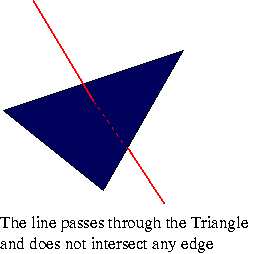 |
proper intersection
S1, S2, S3 <0 Or S1, S2, S3 >0 |
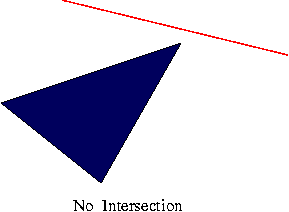 |
no intersection
S1, S2 and S3 don't all have the same sign |
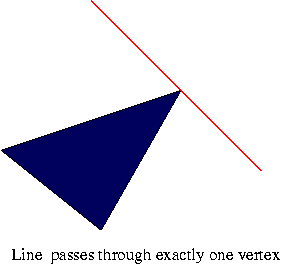 |
intersection at a vertex
Two out of S1, S2, S3 are equal to zero |
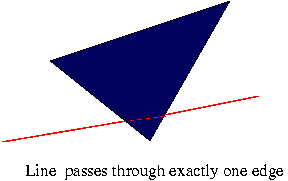 |
Intersection on an edge
One of the three S1,S2,S3 is zero and the other two have same sign (>0 or <0) |
S1 = S2 = S3 = 0
Let p be a point not coplanar with the triangle T. Let T1, T2 and T3 denote the triangle (v0,v1,p), (v1,v2,p) and (v2,v0,p). Notice that the line and the triangle Ti are not coplanar.The following cases are solved by intersecting the line L and the triangles Ti , as in case 1
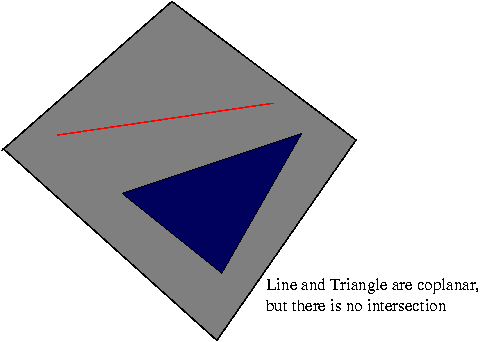 |
Coplanar and no intersection
Intersection of L and Ti returns "no intersection" for all i = 1,2,3. |
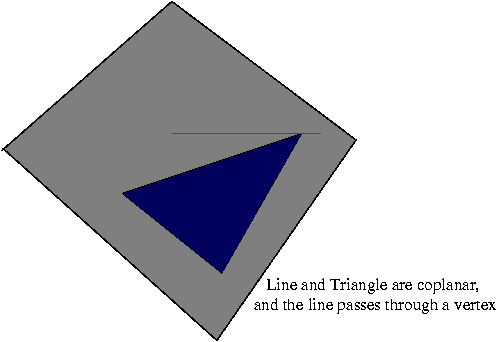 |
Coplanar and intersection at a vertex
Intersection of L and one of the Ti returns "no intersection" and intersection of L and the other two Ti returns "intersection at a vertex" |
 |
Intersection through two edges
Intersection of L and two of the Ti returns "intersection on an edge" and the intersection with the remaining Ti returns "no intersection" |
 |
Intersection contains an edge
Intersection of L and two of Ti returns "intersection at a vertex" and the intersection of L and the remaining Ti will result in the line and the triangle being coplanar |
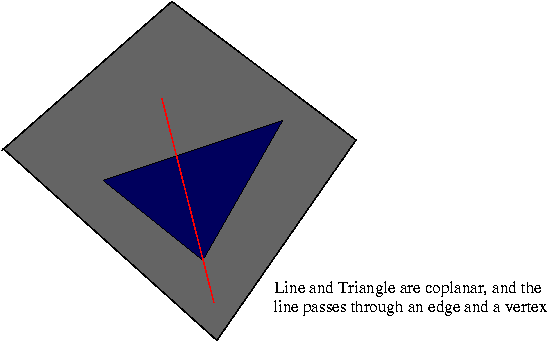 |
Intersection through one vertex and an edge
Intersection of L and two of the Ti will return "intersection at a vertex" and the intersection with the remaining Ti returns "intersection on an edge" |